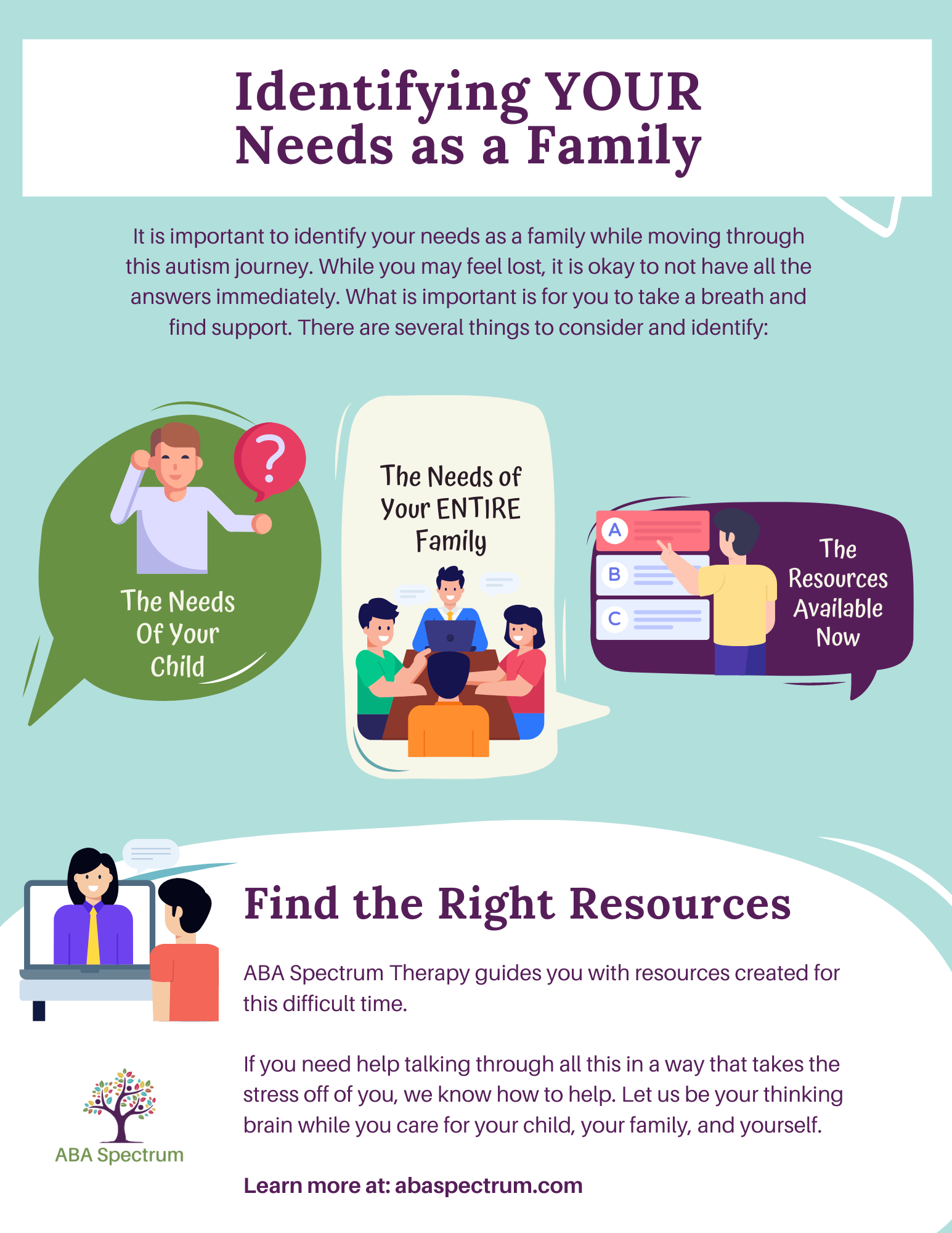Identifying YOUR Needs as a Family
It is important to identify your needs as a family while moving through this autism journey. Research suggests that the time following an autism diagnosis is very stressful for parents. They are attempting to understand the impact that the diagnosis has on them, their family and their child, and anticipating what is next (Davis & Carter, 2008; Turner-Brown et al., 2019).
While you may feel lost, it is okay to not have all the answers immediately. What is important is for you to take a breath and find support. There are several things to consider and identify:
The needs of your child
The needs of your entire family
The resources you have available now
Available Resources for your family
Resources may include time, money, and friends or family members who can support you. It may be hard to think about the needs of your family while you focus on getting what your child with autism needs. But this is important.
When considering what your child needs, you also need to consider how your next move may impact other members of your family. You do not need to do this alone.
ABA Spectrum Therapy guides you with resources created for this difficult time. The steps you take following a diagnosis will depend on a few pieces. These include:
Your family needs and values
Cultural considerations
Your child’s individual needs
Your available resources
What feels right for you and your family.
If you need help talking through all this in a way that takes the stress off of you, we know how to help. Let us be your thinking brain while you care for your child, your family, and yourself.
References:
Davis, N. O. & Carter, A. S. (2008). Parenting stress in mothers and fathers of toddlers with autism spectrum disorders: Associations with child characteristics. Journal of Autism and Developmental Disorders, 38, 1278-1291
Turner-Brown, L., Hume, K., Boyd, B. A., Date, K. K. (2019). Preliminary efficacy of family implemented TEACCH for toddlers: Effects on parents and their toddlers with autism spectrum disorder. Journal of Autism and Developmental Disorders, 49(7), ahead-of-print.


